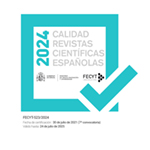Vestigios del recurso costero en el sitio arqueológico de Teopancazco, Teotihuacan, Estado de México
Resumen
El presente artículo es una síntesis del trabajo de investigación Captura, preparación y uso diferencial de la ictiofauna encontrada en el sitio arqueológico de Teopancazco, Teotihuacan, el cual hace hincapié en el hallazgo de diferentes huesos de peces encontrados en el contexto arqueológico de Teotihuacan, algo realmente inusual en esta área del altiplano central mexicano. El sitio arqueológico donde se efectuó el hallazgo de dichos materiales es el centro del barrio de Teopancazco, lugar que se ubica en la periferia del centro ceremonial, y turístico, de la mítica «Ciudad de los dioses». Aquí la presencia de variedades ícticas como el pez bobo (Joturus pichardi), el huachinango (Lutjanus sp), robalo (Centropomus sp), mojarras (Diapterus sp) o barracudas (Sphyraena barracuda), por citar algunas, rompe con la falsa idea de que en época prehispánica los antiguos teotihuacanos no tenían acceso, ni gusto, por los recursos costeros.Descargas
Descarga artículo
Licencia
La Revista Española de Antropología Americana, para fomentar el intercambio global del conocimiento, facilita el acceso sin restricciones a sus contenidos desde el momento de su publicación en la presente edición electrónica, y por eso es una revista de acceso abierto. Los originales publicados en esta revista son propiedad de la Universidad Complutense de Madrid y es obligatorio citar su procedencia en cualquier reproducción total o parcial. Todos los contenidos se distribuyen bajo una licencia de uso y distribución Creative Commons Reconocimiento 4.0 (CC BY 4.0). Esta circunstancia ha de hacerse constar expresamente de esta forma cuando sea necesario. Puede consultar la versión informativa y el texto legal de la licencia.









